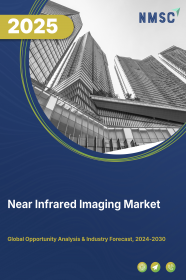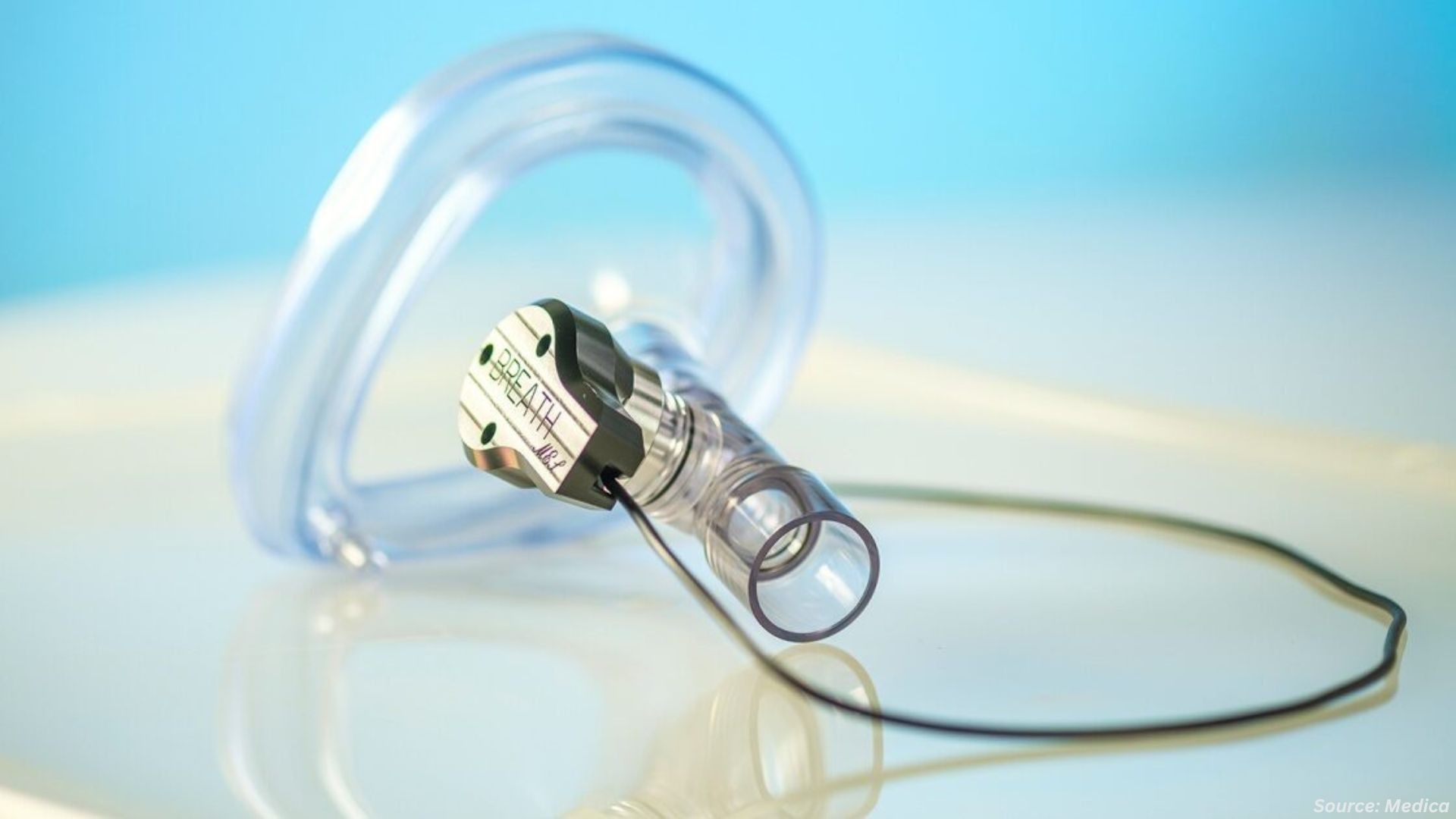
Near Infrared Imaging Market by Product (Near Infrared Fluorescence Imaging Systems and Near Infrared Fluorescence & Bioluminescence Imaging Systems), by Application (Pre-clinical Imaging, Medical Imaging (Diagnostic and Surgeries), and Clinical Imaging), by Indication (Cancer Surgeries, Cardiovascular Surgeries, Gastrointestinal Surgeries, Plastic/Reconstructive Surgeries, and Others), by End Users - Global Opportunity Analysis and Industry Forecast, 2020 – 2030
Market Definition
The global Near-Infrared Imaging Market is anticipated to grow at a CAGR of 3.9% from $285.39 million in 2019 to generate revenue of $434.72 million by 2030. Near-infrared imaging is a spectroscopic method that uses electromagnetic spectrum (from 780 nm to 2500 nm) for medical and physiological diagnostics, as well as research including blood sugar, pulse oximetry, functional neuroimaging, and sports medicine among others. There are other applications of infrared imaging in sectors such as pharmaceutical, atmospheric chemistry, combustion research and astronomy. Near infrared imaging or spectroscopy is a relatively better option than other methods as it provides higher resolution and cause no harm to the patient.
Market Dynamics and Trends
Globally, the rise in the number of chronic diseases such as prostate cancer, lungs cancer and many others, leading to surgical procedures and diagnostics has led to a remunerative growth in the near infrared imaging market. Also, surge in adoption of near infrared imaging worldwide due to the increasing geriatric population and growing health awareness among people about its advantages are key drivers of the global near infrared imaging market.
However, the high cost and availability of other alternative methods like thermal imaging, MRI, ultrasound and many more has been observed as a restraint hampering the market growth globally. On the contrary, the increasing prevalence of dreadful diseases and neurological disorders due to the unhealthy lifestyle, along with the rising population will create ample opportunities for the growth of infrared imaging market in the coming years.
Market Segmentations and Scope of the Study
Globally, near infrared imaging market is segmented based on product, application, indication, end user, and region to provide a detailed assessment of the market. On the basis of product, the market is divided into near infrared fluorescence imaging systems and near infrared fluorescence & bioluminescence imaging systems. Based on application, the market is classified into pre-clinical imaging, medical imaging and clinical imaging. Based on indication, the market is segmented into cancer surgeries, cardiovascular surgeries, gastrointestinal surgeries, plastic/reconstructive surgeries, and others. Based on end user, the market is divided into hospitals & clinics, research laboratories, and others. Geographically, the near infrared imaging market size is analysed across North America, Europe, Asia-Pacific, and rest of the world (RoW).
Geographical Analysis
In 2019, North America held the lion share in near infrared imaging market size and is predicted to dominate the market throughout the forecast period owing to increasing number of surgical procedures performed in the region. Also, other factors such as easy availability of NIR imaging systems, presence of key players, and advancement of medical facilities add up to the market growth in this region.
Asia-Pacific is expected to manifest fastest growth rate owing to surge in awareness regarding the benefits of early screening of cancer. Other factors that boost the growth of the market include huge patient base and rise in medical expenditure in this region. Also, developing economies in this region offer massive opportunities for near infrared imaging providers to expand their business.
Competitive Landscape
The global near infrared imaging market is highly competitive and the prominent players in the market have adopted various strategies for gaining maximum market share like expansion in untapped and under developed geographies, collaborations, new production launches, promotions and many others. Major players operating in the market include Carl Zeiss AG, Danaher Corporation (Leica Microsystems), Hamamatsu Photonics K.K., Karl Storz SE & Co. KG, Li-Cor, Inc., Medtronic plc., PerkinElmer Inc., Quest Innovations B.V. (Quest Medical Imaging B.V.), Shimadzu Corporation, and Stryker Corporation.
Key Benefits
-
This report entails a detailed quantitative analysis along with the current global near infrared imaging market trends from 2020-2030 to identify the prevailing opportunities along with the strategic assessment.
-
The near infrared imaging market forecast is studied from 2020-2030.
-
The market size and estimations are based on a comprehensive analysis of key developments in the near infrared imaging industry.
-
A qualitative analysis based on innovative products facilitates strategic business planning.
-
The development strategies adopted by the key market players are enlisted to understand the competitive scenario of the market.
Key Market Segments
By Product
-
Near Infrared Fluorescence Imaging Systems
-
Near Infrared Fluorescence & Bioluminescence Imaging Systems
By Application
-
Pre-clinical Imaging
-
Medical Imaging (Diagnostic and Surgeries)
-
Clinical Imaging
By Indication
-
Cancer Surgeries
-
Cardiovascular Surgeries
-
Gastrointestinal Surgeries
-
Plastic/Reconstructive Surgeries
-
Others
By End User
-
Hospitals & Clinics
-
Research Laboratories
-
Others
By Region
-
North America
-
U.S.
-
Canada
-
Mexico
-
-
Europe
-
Germany
-
France
-
UK
-
Italy
-
Spain
-
Rest of Europe
-
-
Asia-Pacific
-
Japan
-
China
-
India
-
Australia
-
South Korea
-
Rest of Asia-Pacific
-
-
RoW
-
Brazil
-
Saudi Arabia
-
South Africa
-
Remaining Countries
-
Key Players
- Carl Zeiss AG
- Danaher Corporation (Leica Microsystems)
- Hamamatsu Photonics K.K.
- Karl Storz SE & Co. KG
- Li-Cor Inc.
- Medtronic plc.
- PerkinElmer Inc.
- Quest Innovations B.V. (Quest Medical Imaging B.V.)
- Shimadzu Corporation
- Stryker Corporation.
REPORT SCOPE AND SEGMENTATION
|
Parameters |
Details |
|
Analysis Period |
2019–2030 |
|
Base Year Considered |
2020 |
|
Forecast Period |
2020–2030 |
|
Market Size Estimation |
Million (USD) |
|
Market Segmentation |
By Product (Near Infrared Fluorescence Imaging Systems, Near Infrared Fluorescence & Bioluminescence Imaging Systems) By Application Type (Pre-clinical Imaging, Medical Imaging (Diagnostic and Surgeries), Clinical Imaging) By Indication (Cancer Surgeries, Cardiovascular Surgeries, Gastrointestinal Surgeries, Plastic/Reconstructive Surgeries, Others) By End User (Hospitals & Clinics, Research Laboratories, Others) |
|
Geographical Segmentation |
North America (U.S., Canada, Mexico) Europe (UK, Germany, France, Italy, Spain, Rest of Europe), Asia-Pacific (Australia, China, India, South Korea, Japan, Rest of APAC), Rest of the World (Brazil , Saudi Arabia , South Africa, Remaining Countries) |
|
Companies Profiled |
Carl Zeiss AG, Danaher Corporation (Leica Microsystems), Hamamatsu Photonics K.K., Karl Storz SE & Co. KG, Li-Cor, Inc., Medtronic plc., PerkinElmer Inc., Quest Innovations B.V. (Quest Medical Imaging B.V.), Shimadzu Corporation, and Stryker Corporation. |




















 Speak to Our Analyst
Speak to Our Analyst

























